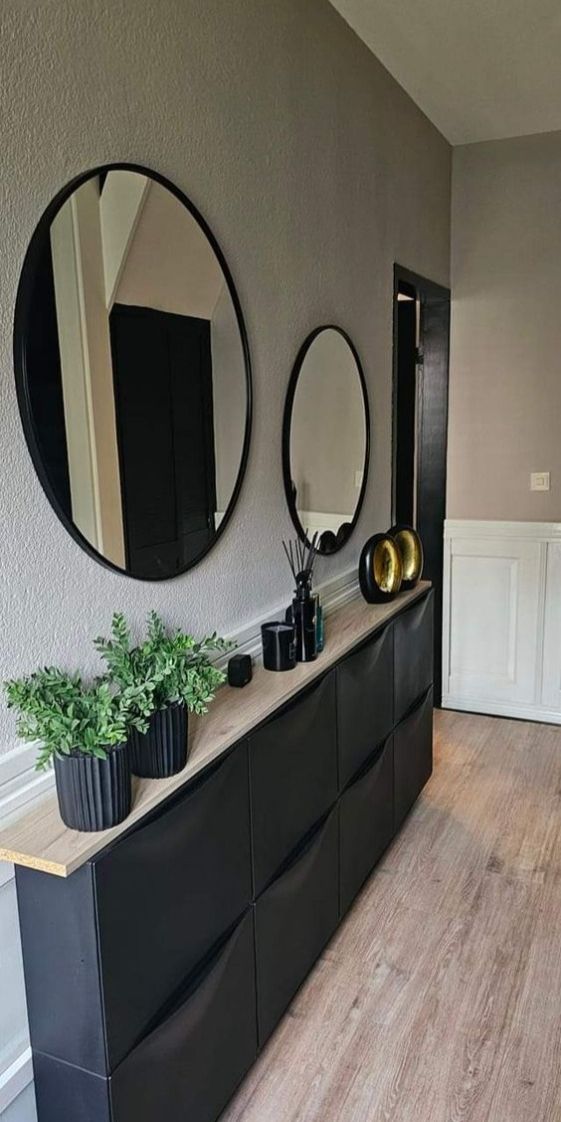Reflecting Elegance: The Art of Using Mirrors in Transforming Your Home Décor
Mirrors have long been a staple in interior design, valued not only for their functional purposes but also for their ability to transform spaces. When used thoughtfully, mirrors can elevate a room’s aesthetic, making it appear brighter, more spacious, and more inviting. In this article, we’ll explore the versatile role mirrors play in home décor and how you can use them to create a perfect balance of style and function.
The Power of Mirrors in Home Décor
Mirrors are more than just tools for checking your reflection; they are powerful design elements that can redefine a space. Their reflective surfaces can bounce light around a room, creating an illusion of depth and making even the smallest areas feel more expansive. Additionally, mirrors can serve as statement pieces, adding a touch of elegance or drama to a space, depending on their placement and design.
Choosing the Right Mirror
Selecting the right mirror for your space is the first step in utilizing its potential. Consider the following factors when choosing a mirror:
- Size: The size of the mirror should be proportional to the size of the room. A large mirror in a small room can create the illusion of more space, while a smaller mirror in a large room can serve as an accent piece without overwhelming the space.
- Shape: The shape of the mirror can significantly impact the room’s aesthetic. Round mirrors add softness and are often used to balance out sharp angles in modern spaces. Rectangular or square mirrors are more traditional and can make a space feel structured and organized. Irregular or uniquely shaped mirrors can become a focal point, adding an element of surprise and creativity.
- Frame: The frame of the mirror should complement the room’s décor. A wooden frame can add warmth and texture, while a metal frame might bring in a touch of industrial or contemporary style. Frameless mirrors are ideal for minimalist designs, offering a clean and unobtrusive look.
Strategic Placement for Maximum Impact
Where you place your mirrors can make a significant difference in how they affect your space. Here are some strategic placement ideas to consider:
- Opposite Windows: Placing a mirror opposite a window is one of the most effective ways to brighten a room. The mirror reflects natural light, making the space feel more open and airy. This placement is particularly beneficial in rooms with limited windows or in darker areas of the home.
- Above Furniture: Hanging a mirror above a piece of furniture, such as a sofa, console table, or fireplace mantle, can create a harmonious look. It not only anchors the space but also enhances the overall aesthetic by reflecting elements of the room.
- In Hallways: Mirrors are a great addition to narrow or dark hallways, as they can make these spaces appear wider and more inviting. A series of smaller mirrors along a hallway wall can create an interesting visual effect while also serving a functional purpose.
- In Dining Rooms: A large mirror in the dining room can add a sense of grandeur and elegance. It reflects the dining table and any lighting fixtures above it, enhancing the room’s ambiance during meals.
- In Bedrooms: Placing a mirror opposite the bed can create a sense of balance and symmetry. However, some people prefer to avoid this placement due to cultural or personal beliefs. A mirror on the closet door or above a dressing table is another practical and stylish option.
Samples Of Transformed Home Decor With Mirrors











Creating Balance with Mirrors
While mirrors can enhance a space, it’s important to use them thoughtfully to maintain balance in your décor. Here are some tips:
- Avoid Overuse: Too many mirrors in one space can create a chaotic or disorienting effect. Stick to one or two well-placed mirrors per room to achieve the desired impact without overwhelming the space.
- Consider Reflection: Always be mindful of what your mirrors are reflecting. A mirror reflecting a beautiful view, a piece of art, or a chandelier can enhance the room’s aesthetic. However, a mirror reflecting clutter or an unattractive element can have the opposite effect.
- Height Matters: When hanging mirrors, consider the height at which they will be viewed. A mirror hung too high or too low can disrupt the room’s balance. Ideally, the center of the mirror should be at eye level for most people.
- Layering with Other Decor: Mirrors can be layered with other decorative elements, such as candles, vases, or picture frames, to create a cohesive look. The key is to ensure that the mirror enhances the other elements without overpowering them.
